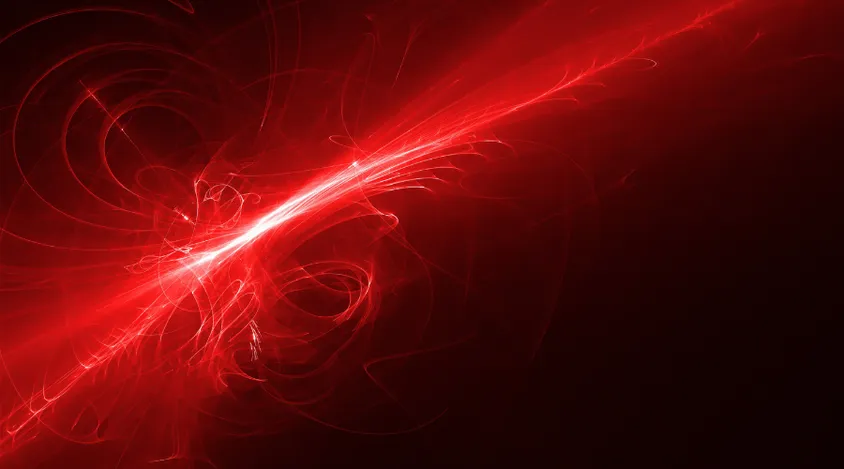Dark Energy: The Cosmic Mystery That Expands the Universe

The universe is expanding, and at the heart of this grand cosmic dance lies one of the greatest enigmas of modern science: Dark Energy.
Anúncios
This invisible force, making up about 68% of the universe, is driving galaxies apart at an accelerating rate.
But what exactly is it?
Why does it dominate the cosmos, and how does it shape the fate of everything we know?
Let’s dive into the mysteries of this elusive phenomenon and explore why it continues to baffle scientists worldwide.
Understanding Dark Energy is crucial for grasping the fundamental nature of the universe.
As researchers delve deeper, they uncover more questions than answers, highlighting the complexity of cosmic phenomena.
The Discovery That Shook Astrophysics
In 1998, two independent teams of astronomers made a groundbreaking discovery while studying distant supernovae.
They found that the universe wasn’t just expanding—it was doing so at an accelerating pace.
This observation defied expectations, as gravity alone should have been slowing the expansion.
The only plausible explanation?
A mysterious force, now known as Dark Energy, was counteracting gravity on cosmic scales.
This revelation earned the teams the 2011 Nobel Prize in Physics and opened a new chapter in cosmology.
But despite decades of research, Dark Energy remains one of the most profound puzzles in science.
Scientists continue to refine their methods and theories in hopes of unraveling this mystery.
The implications of this discovery extend beyond astrophysics, influencing our understanding of fundamental physics.
+ What Is a White Hole? The Theory Behind the Cosmic Phenomenon
What Is Dark Energy?
Unlike matter or radiation, Dark Energy doesn’t clump or interact with light.
It’s a property of space itself, often described as a form of energy inherent to the vacuum.
Albert Einstein’s cosmological constant, a term he initially introduced (and later discarded) to balance his equations, is now considered a leading candidate to explain this phenomenon.
However, the true nature of Dark Energy is still unknown.
Some theories suggest it could be a dynamic field, similar to the Higgs field, while others propose modifications to Einstein’s theory of gravity.
The lack of a definitive answer only deepens the intrigue.
This uncertainty fuels ongoing research and debate within the scientific community.
As physicists explore different models, they seek to identify the characteristics that define Dark Energy.

The Role of Dark Energy in the Universe’s Fate
The presence of Dark Energy has profound implications for the future of the cosmos.
If it continues to dominate, the universe will expand forever, growing colder and darker.
Galaxies will drift apart, and eventually, even stars will fade.
This scenario, known as the “Big Freeze,” is one of several possible outcomes.
But what if Dark Energy evolves over time?
Some models suggest it could grow stronger, leading to a “Big Rip,” where even atoms are torn apart.
Alternatively, it might weaken, allowing gravity to reclaim dominance and potentially triggering a “Big Crunch.”
The uncertainty keeps cosmologists on their toes.
Understanding these potential futures helps astronomers predict the long-term behavior of the universe.
As researchers explore these scenarios, they also consider how Dark Energy might influence the formation of structures in the cosmos.
For insights into cosmic fate scenarios, visit NASA’s Universe.
Current Research and Challenges
Understanding Dark Energy requires cutting-edge technology and innovative approaches.
Projects like the Dark Energy Survey (DES) and the upcoming Euclid space telescope aim to map the universe’s large-scale structure and measure its expansion with unprecedented precision.
One of the biggest challenges is distinguishing Dark Energy from other cosmic components, such as dark matter.
While dark matter clumps and influences galaxy formation, Dark Energy operates on a much larger scale, affecting the universe as a whole.
Researchers are developing sophisticated observational techniques to isolate the effects of Dark Energy from other forces at play.
This endeavor includes analyzing the distribution of galaxies and measuring cosmic microwave background radiation.
As technology advances, our understanding of Dark Energy may become clearer, revealing its role in the universe’s evolution.
For updates on ongoing research, check out The European Space Agency.

The Human Quest for Answers
The search for Dark Energy is more than a scientific endeavor—it’s a quest to understand our place in the cosmos.
By unraveling this mystery, we gain insights into the fundamental laws of physics and the origins of the universe itself.
As physicist Brian Greene once said, “The universe is not only stranger than we imagine, it is stranger than we can imagine.”
Dark Energy exemplifies this sentiment, reminding us that the cosmos is full of surprises waiting to be uncovered.
This quest for knowledge drives scientists to collaborate across disciplines, merging astrophysics with quantum mechanics and philosophy.
The implications of understanding Dark Energy extend to our comprehension of reality itself, challenging our perceptions and assumptions.
As we explore this cosmic mystery, we are reminded of the vastness of the unknown that still awaits discovery.
++ Dayson’s Star: What It Is and How It Influences Modern Astronomy
Tables: Key Data on Dark Energy
| Aspect | Value |
|---|---|
| Percentage of Universe | 68% |
| Discovery Year | 1998 |
| Leading Theory | Cosmological Constant (Λ) |
| Major Research Projects | DES, Euclid, WFIRST |
| Possible Cosmic Fates | Description |
|---|---|
| Big Freeze | Eternal expansion, cooling |
| Big Rip | Expansion accelerates, tearing apart |
| Big Crunch | Gravity overcomes expansion |
Conclusion: A Cosmic Enigma Worth Exploring
Dark Energy is more than a scientific curiosity—it’s a window into the deepest workings of the universe.
While we’ve made significant strides in understanding its effects, the true nature of this force remains elusive.
As technology advances and new discoveries emerge, we inch closer to solving one of the greatest mysteries of all time.
The journey to comprehend Dark Energy is a testament to human curiosity and ingenuity.
It challenges us to think beyond the visible, to question the unknown, and to embrace the beauty of the cosmos in all its complexity.
So, the next time you gaze at the night sky, remember: the stars and galaxies are not just points of light—they’re part of a vast, dynamic universe, shaped by forces we’re only beginning to understand.
And somewhere, hidden in the fabric of space, Dark Energy continues its silent, relentless work, driving the cosmos toward an uncertain but fascinating future.
